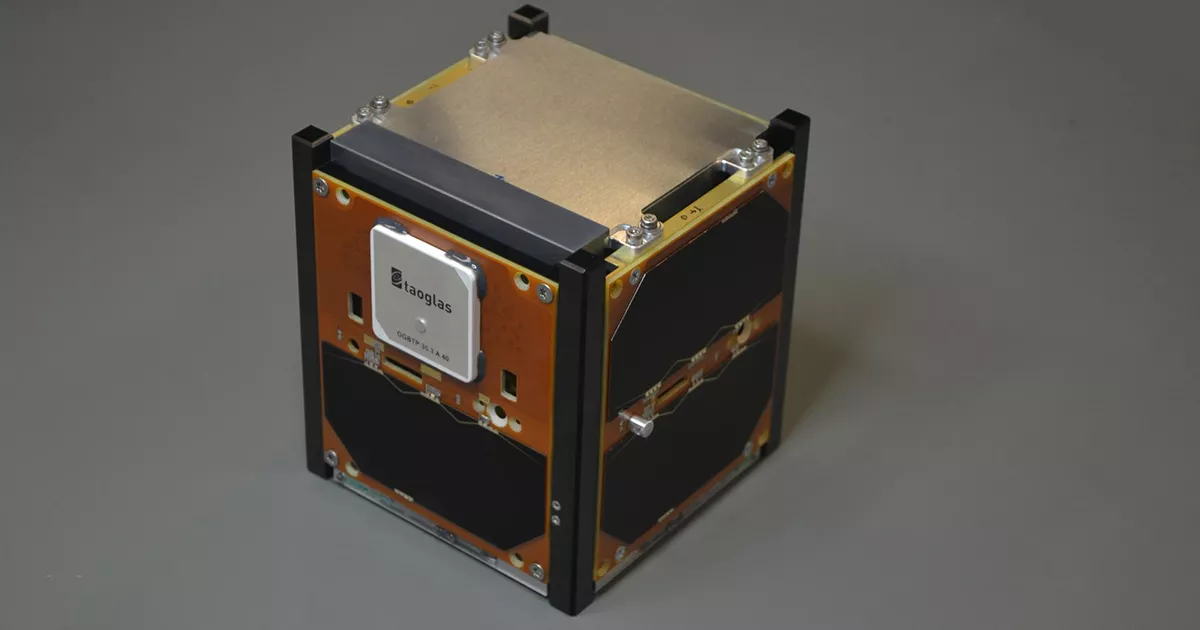In late November, the first satellite made by a Hungarian-led team expressly for astrophysical research was completed at the Konkoly Thege Miklos Astronomical Institute (also known as the Konkoly Observatory) of the ELKH Research Centre for Astronomy and Earth Sciences (CSFK), as part of a collaboration between Hungarian, Japanese and Slovak researchers. Since the discovery of gravitational waves in 2015, the scientific world has shown increasing interest in the Universe's most high-energy explosions. However, locating and identifying the source of gravitational waves remains a challenge, as gravitational wave detectors are unable to accurately identify the direction of the sources, although the dimensions of the objects behind the phenomenon – e.g. merged black holes or neutron star pairs – can be accurately measured. One simple way to determine their direction may be to observe visible or other electromagnetic waves generated when neutron stars fuse: the detection of gamma rays is perhaps the best tool for determining their position.

The moments of the installation of the Hungarian satellite when the detector's reading module was affixed to the data acquisition unit.
Although gamma-ray bursts have themselves been observed since the 1960s – including independently of gravitational waves – the phenomena associated with them have left us with many open questions. To facilitate research into this area, a Hungarian project was initiated with the aim of laying the foundations of future projects for the development of satellite fleets. Under the leadership of the staff of the Konkoly Observatory, staff from Hiroshima University and the ELTE TTK Institute of Physics were involved in designing and building a detector capable of measuring gamma radiation and which can also be fitted into a small system that complies with CubeSat standards. "The heart of the detector is a crystal of cesium iodide that emits visible light when exposed to gamma radiation. This is detected by sensitive sensors called photon counters. After amplifying and digitizing the signal, signals that are 'suspicious' in astronomical terms are stored locally or transmitted directly to a radio module," said András Pál, who led the development of the system on behalf of the Konkoly Observatory.

Group picture with the nearly completed satellite, from left to right: László Mészáros − ELKH CSFK Astronomical Institute; Masanoni Ohno – Hiroshima University, ELTE Physics Institute; András Pál – CSFK Astronomical Institute
"The project is a remarkable example of international collaboration, with Japanese and Hungarian researchers together developing an astronomical instrument for a satellite that would previously have only been able to fly on a larger satellite," stated Masanori Ohno, who moved from Hiroshima in Japan to Budapest for the project. "It was a huge challenge to design the entire detector to fit into such a small space," explained László Mészáros, who was responsible for the mechanical aspects of the detector. "The packaging and assembling inside the crystal foils often required incredibly delicate manual work," added the astrophysicist Jakub Řípa.
This small (or miniaturized) satellite has the same dimensions as the first satellite built entirely by Hungary, known as MaSat-1. In addition to the detector itself, the approximately 10x10x11-centimeter cube contains a power supply, radio transceiver module, an on-board computer and a GPS receiver for accurate timing. Though the detector itself only takes up approximately one-third of the satellite's space, it accounts for nearly half the weight, as the crystals used in gamma detectors are highly dense, while the light-detecting sensors must also be protected with a little extra lead coating. The onboard systems of the small satellite were developed by the Slovak companies Spacemanic and Needronix in cooperation with the staff of the Faculty of Aviation Engineering of the Technical University of Košice and the Hungarian group – as a further development of the successful 10C10x11-centimeter SkyCube project.

The completed GRBAlpha small satellite, with the gamma detector on the top.
The Hungarian satellite is the first step towards later creating a fleet of satellites. If the detector concept proves to be succesful, then larger – with dimensions of approximately 10x10x34 centimeters, though still in line with CubeSat standards – satellites can enable not only more accurate measurements, but also extremely accurate measurements of the direction of the sources by assessing the difference in the time of detection of radiation received by each member of the fleet.
"This will open up a new path in astrophysics, and ours may be the first CubeSat detector that detects gamma flashes," said Norbert Werner, a staff member at ELTE and Masaryk University in Brno, who coordinated the insertion of the detector into the satellite frame. "This is why the satellite's name is GRBAlpha," added László Kiss, general director of CSFK.
In this way, nano-satellites may soon compete with classical large-scale satellite projects that are nearing the end of their planned lifespan. Zsolt Frei, director of ELTE's newly formed ELTE Space Science Center, and leading researcher in an ELTE LIGO team, stated that "The Hungarian satellite fleet will enable LIGO to determine the location of neutron star pairs as sources of gravitational waves in the coming years, i.e. to take the next key step in multichannel astronomy.”
The introductory scientific article for the project is available here: https://arxiv.org/abs/2012.01298